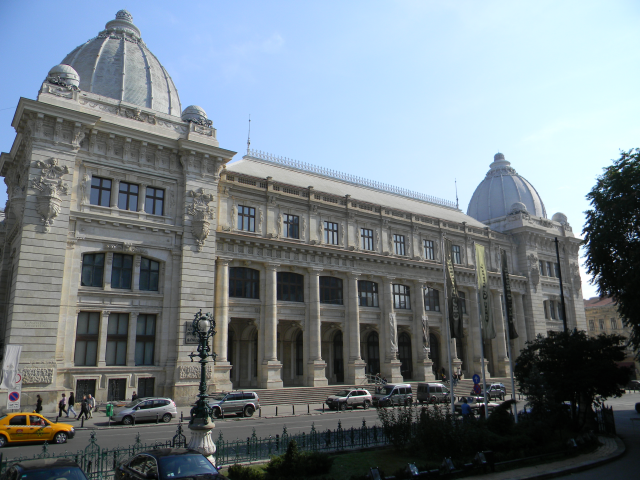The Postal Service Palace in Bucharest
After acceding to the throne of the Romanian Principalities in 1866, King Carol I set out to turn Bucharest into a modern capital.

Christine Leșcu, 24.12.2016, 14:04
The central part of the city, delineated by the Lipscani
Street, the old Princely Court, the Dambovita riverbank and Victoria Road would
gradually change its appearance. Springing up next to old merchant houses and
inns were monumental buildings such as the National Bank Palace, the Savings
Bank headquarters and the Postal Service Palace across the road, whose front
was overlooking Victoria Road and whose backside was on Stavropoleos Street,
close to the monastery of the same name created on the site of a former inn.
The Postal Service Palace, whose construction began in
1894, was also built on the site formerly occupied by an inn. The latter’s
history is illustrative of the tumultuous life of the city. The building of the
inn itself was linked to Constantin Brancoveanu, whose long reign from 1688 to
1714 left an unmistakable mark on the history of Bucharest and the whole of
Wallachia. Historian Dan Falcan tells us more:
This inn was built on the site where the
home of Constantin Balaceanu had been located. Balaceanu was a very important
figure in the early days of Brancoveanu’s reign because he was a sworn enemy of
the latter. Balaceanu was the son-in-law of ruler Serban Cantacuzino, the uncle
of Brancoveanu and the ruler who preceded him on the throne of Wallachia. He
wanted Serban’s son and his brother-in-law to come to power instead of
Brancoveanu. This never happened but Balaceanu continued to plot against the
new ruler, fleeing to the Austrians and organising a confrontation that came to
an end in the Battle of Zarnesti in 1690. The Austrians were defeated and
Constantin Balaceanu was taken prisoner and beheaded, while his property was
confiscated by Brancoveanu, including his houses located on what is today the
site of the National History Museum. According to the chroniclers of the day,
the decapitated head of Constantin Balaceanu remained for quite a while impaled
on a pole in front of his home. Brancoveanu then demolished the houses and
built an inn that would become famous and which survived well into the 19th
century. This was one of the most important inns in Bucharest, together with
Gabroveni Inn and Manuc Inn.
However, inns started to disappear in the
first half of the 19th century. It was then that the Constantin
Brancoveanu inn, which had fallen into in ruin, was demolished. A modern, tall
building, emblematic for new and less troubled times was built on the site of
the old inn. The new palace hosted the central post, a vital institution at the
time, as it was the major means of communication. The building was designed by
one of the first Romanian architects who studied in Paris. Historian Dan Falcan
has more:
The architect who received the mission to
design and make the blueprints for the building, Alexandru Savulescu, together
with the then director of the Post Service travelled extensively across Europe
to see how the headquarters of the central posts in more developed countries
looked like. They travelled extensively for two three years until they finally
decided to design a building similar to the Central Post Office in Geneva. The
current Postal Service Palace looks very much like the postal service palace in
Geneva. Construction works started in 1894. For 32 years, between 1862, when
Brancoveanu’s inn was demolished, and 1894, that vacant plot of land was used
by travelling circuses that arrived in Bucharest. The cornerstone was laid in
1894, with the royal family, King Carol I and Queen Elisabeta, in attendance.
Construction works were completed in 1900. It is a grandiose building, as we
can see it today. It cost a lot. Alexandru Savulescu was part of the generation
of Romanian architects who had studied in Paris. They copied the eclectic,
neoclassical style, which was in fashion in the French capital city back then.
The Postal Service Palace was also built in that style. 10 Doric columns, with 9
vaults, guard the façade.
Since its inauguration in 1900, the Postal
Service Palace had kept its function until 1971, when Romania’s National
History Museum was laid out inside the building. The museum was inaugurated in
1972 and is still open to visitors.





























